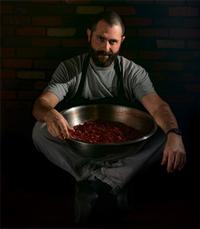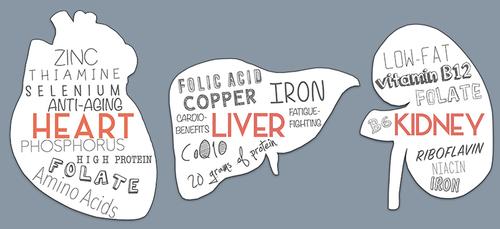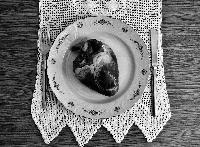For many, the month of October can conjure up a glorification of gore. Here at the Free Library’s Culinary Literacy Center, we are taking a bit of a different approach and beginning a three-part series focusing on offal.
Offal, also called variety meat, refers to the trimmings of animals that might go unused once a butcher does their deed. The uses of these cuts of meat, which range from kidney to heart and everything in between, vary from culture to culture. With the re-emergence of whole animal butchering by local outfits such as Primal Supply Meats, Philadelphia-based chefs and home cooks alike can try their hand at using offal to create dishes that nourish meat eaters and challenge them to learn more about the intersections of anatomy and nutrition.
As Jonathan Reisman, an emergency room physician co-presenting the class, writes:
The body parts that make life possible—the muscles that help us move, the heart that pumps blood, and the brain that conjures our most personal thoughts and emotions—all correspond to similar, if not the same, organs in animals. A good doctor understands the function of these parts as they relate to our pursuit of health; a good butcher or chef understands them as ingredients to become delectable food. Learning anatomy and physiology in medical school helped broaden my culinary horizons, and I found that knowledge of the bodily origin of my food deepened my connection when eating it. Knowing where your food comes from is not just the geographical origin of fruits and vegetables, but also understanding the anatomy and physiology of how body parts functioned during life before being served on our dinner plates. Becoming a doctor disrupted my ingrained habits of edibility and cleansed the doors of my culinary perception. And, as William Blake might have said, "when the doors of perception are cleansed, one may see things as they truly are"—delicious. Come join us at Anatomy Eats to learn where our food truly comes from and how the perspectives of anatomy and cuisine overlap within our own bodies.
The first Anatomy Eats class, which kicks off on Tuesday, October 9, explores physiological systems of the body by way of cuisine and anatomy and features the circulatory system. We will get the chance to taste blood, bone marrow, and heart, as prepared by chef Ari Miller, while Dr. Reisman describes how these components work together to keep our bodies healthy. As an on-again-off-again vegetarian, I am looking forward to seeing how my own perceptions of meat-eating are challenged by this class.


More than a panache for gore, these classes will put into question our own culture’s singular focus on particular cuts, such as the quintessential chicken breast, and broaden our understanding of what it means to be a culinarily literate meat eater committed to taking part in a more sustainable, more nourishing food system.
Have a question for Free Library staff? Please submit it to our Ask a Librarian page and receive a response within two business days.


